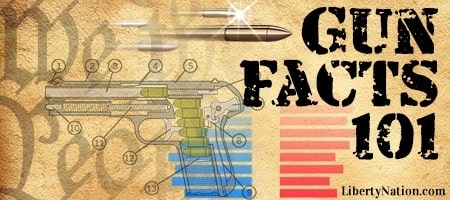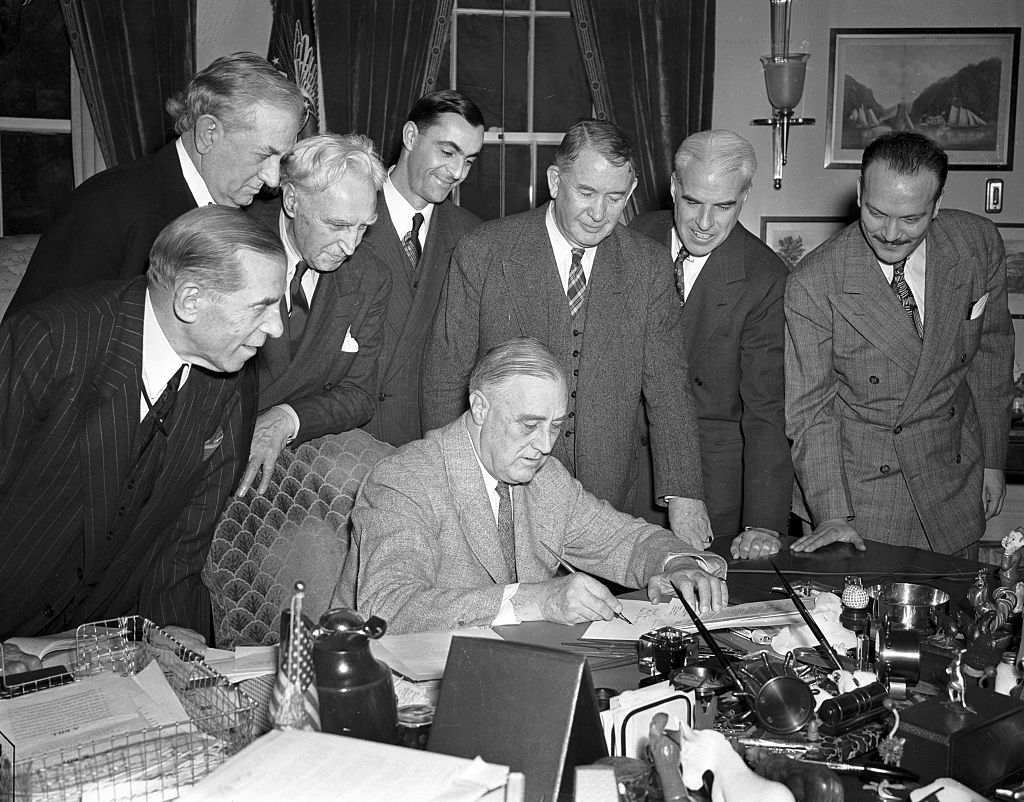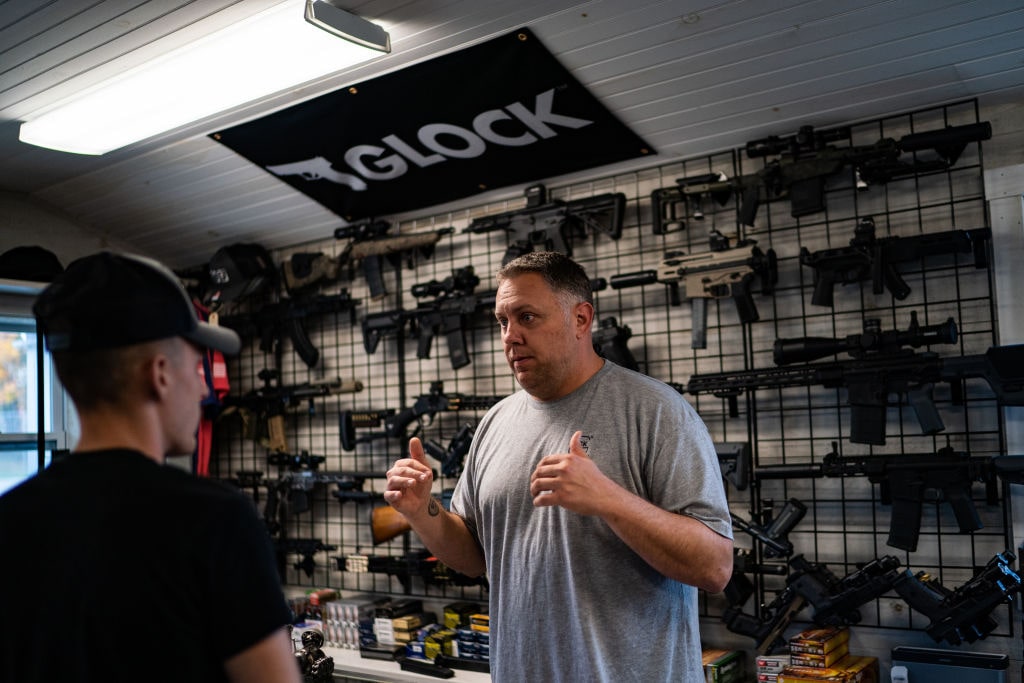As the war over the right to keep and bear arms in America rages on in legislatures and courtrooms across the nation, gun ownership is on the rise. Or is it? NBC has asked the same question of registered voters in the US periodically since 1999: “Do you, or does anyone in your household, own a gun of any kind?” This November, the answer was “yes” for more than half the respondents – a first in the survey’s 25-year span. A longer view of gun ownership over the years, however, casts this story in a different light.
Survey Says: More Guns!
The NBC-sponsored survey is actually conducted by Republican polling firm Public Opinion Strategies and Democratic polling firm Hart Research. Between November 10 and 14, 1,000 registered voters were asked whether they or someone they lived with owned a firearm. The results, released November 21, showed that 52% answered yes.
 NBC’s number in August of 2019 was 46% – and just 42% in February of 2013. That upward trend probably comes as no surprise, given all the press about record-level firearm sales in recent years. In spring of last year, Liberty Nation reported that 32% of respondents to a Gallup poll claimed to personally own at least one gun, and a total of 44% said there was one in the house, whether it was theirs or not. Presumably Gallup asked a different 1,000 or so people, but with numbers that close, it certainly seems the results should scale up.
NBC’s number in August of 2019 was 46% – and just 42% in February of 2013. That upward trend probably comes as no surprise, given all the press about record-level firearm sales in recent years. In spring of last year, Liberty Nation reported that 32% of respondents to a Gallup poll claimed to personally own at least one gun, and a total of 44% said there was one in the house, whether it was theirs or not. Presumably Gallup asked a different 1,000 or so people, but with numbers that close, it certainly seems the results should scale up.
The surprising news in this poll is that even Democrats are now reporting more gun ownership than before. In February 2013, the “yes” answers came from 55% of Republicans, 49% of independents, and 30% of Democrats. Both sets of partisans jumped in August 2019 to 64% and 33% and again in November 2023 to 66% and 41%. Interestingly, independents have been on the decline, with only 46% in 2019 and 45% in 2023 answering in the affirmative.
As an interesting aside, consider NBC’s reporting of the public’s opinion on gun control:
“Almost half – 48% – say they’re more concerned the government will not do enough to regulate access to firearms, versus 47% who believe the government will go too far in restricting gun rights.”
Notice how the language is loaded to make that “almost half” of the population seem like so much more than the other “almost half” rather than a single percentage point. Credit where it’s due, though: aside from that, the poll results were reported without obvious bias.
Gun Ownership Over the Years
Lest one buy into the hype that America’s headed for Wild West 2.0 – or the dreaded second Civil War – it’s best to take a longer view of gun ownership over the years. Gallup has been tracking this issue for a long time – since 1959, to be precise. A full 49% of respondents said they or someone in the household owned at least one firearm in that first poll. It hit 50% in the late 1960s, dropped down to 40% in 1983, then rose up to 51% in the ‘90s before dropping off steeply to 34% in 1999 never to rise above 45% again until the COVID-19 pandemic.
The University of Chicago’s National Opinion Research Center (NORC) also tracks this metric with its own General Society Survey (GSS). NORC’s results were similar: High 40s – with one 50% spike – until the 1980s, when it fell to the low 40s only to drop off once again in the late ‘90s to the 30% range.
There was little in the way of formal tracking on this topic before 1959, though a study of colonial and early US probate inventories conducted by the William and Mary Law Review determined that gun ownership from 1679 to 1810 ranged from 54% to 73% of households. The demographics were as one might expect even of the modern data: The wealthy owned more guns than the poor, men were more likely to own firearms than women, and folks were more likely to be armed if they lived in rural areas than in cities – and this last point was especially true for those on the frontier.
Yes, that leaves a massive portion of US history unaccounted for. However, it also indicates that the surge in gun ownership in recent years isn’t a new trend so much as a return to what has always been the norm in America. And now there is a new question: Why did firearm ownership drop off so steeply in the 1980s and ‘90s?
Has Anything Really Changed?

(Image credit: Getty Images)
Well, perhaps a better question is: “Did it?” President Franklin D. Roosevelt signed the first federal gun control into law: The National Firearms Act of 1934. Before the NFA, there were no restrictions on who could own what firearms or what kind. For the first 143 years after the Second Amendment took effect, gun control was limited to state and local governments restricting where certain weapons could be carried in public.
Flash forward another 34 years to the Gun Control Act of 1968, and now there are categories of prohibited people, the Federal Firearm License, and restrictions on mailing guns. Just 18 years later, Ronald Reagan signed the Firearm Owner’s Protection Act in 1986, which – contrary to what its name implies – further restricted the guns and accessories people could buy. A mere eight years on, and we saw a federal ban on so-called assault weapons that didn’t expire until 2004 and the various new restrictions of the Brady Act that linger still.
See the pattern yet? Federal restrictions may have been slow to start – but once the NFA opened the door, future infringements came faster each time. Aside from updates to the National Instant Criminal Background Check System (NICS), no new gun control made it through Congress until the so-called Bipartisan Safer Communities Act of 2022 – but that’s hardly for lack of trying. Barack Obama, Hillary Clinton, and Joe Biden all campaigned heavily on “common-sense gun control” while running for president. Joe Biden’s 2020 campaign released a “Plan to End Our Gun Violence Epidemic” that can only be described as an anti-armed citizen manifesto – a declaration of war on the Second Amendment while pretending to honor it.
Something else arose from this period of intense anti-gun campaigning: unfortunate mishaps destroying personal firearms. I lost all my guns in a tragic boating accident. They burned up in a house fire. If that isn’t direct enough, consider this joke doing the rounds on the internet: If I had ten guns and the government took nine, how many do I have left? I have 19 – ‘cause I lied to those commies!
In short, whether fewer people actually owned firearms over the last few decades or not, certainly fewer people were comfortable revealing such information publicly. The voluntary gun ownership survey data doesn’t indicate the wild west is making a comeback – though the rapid increase in permitless carry states just might. Rather, it merely demonstrates a return to the American normal – well, or that gun owners aren’t afraid to speak out anymore.




